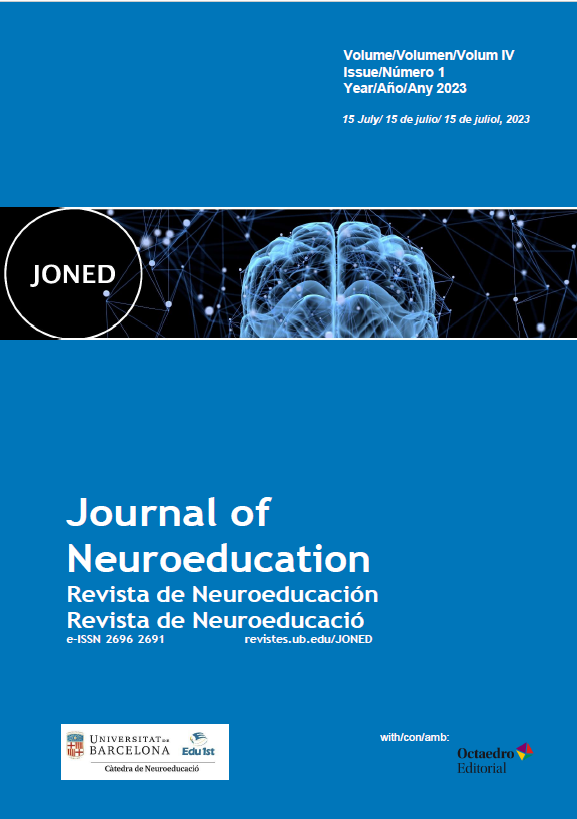The repair of childhood trauma from Barudy and Dantagnan's model of child and adolescent systemic trauma therapy and its significance in the field of education
Utilities and applications from the teaching function.
DOI:
https://doi.org/10.1344/joned.v4i1.42390Keywords:
trauma therapy, child trauma, early aversity, resilience tutor, trauma sensitive schoolAbstract
The current school is the witness and now the involuntary protagonist of the consequences derived from child abuse. Teachers of all educational stages witness in the classroom situations of hostility, apathy, disproportionate emotional reactivity, impulsive behavior, difficulties in accepting limits and authority. And it is that childhood trauma does not include age, social or economic factors, and faces that its origin is troba gairebé always at the earliest stages of child development, the manifestations in the classroom and the severe repercussions at the personal level, academic and social accompany the boy or girl more than the times in which the abuses will pass. The teachers, as privileged professionals for the detection of risk factors, need to understand and adapt their educational task when it comes to donating responses to the needs that children and adolescents affected by trauma present, in addition to not to carry out a re-victimization than the coll·loqui in a situation of greater vulnerability.
Barudy i Dantagnan's Child-Juvenile Systemic Traumatherapy offers a comprehensive understanding of the traumatic consequences of maltreatment in childhood, and is currently an integrative, coherent and effective therapeutic model. This paradigm is the source of the contributions related to clinging, the psychology of trauma, the psychology of development, the study of parental competencies and resilience, offering, from a research-action methodological perspective, a specialized model.
The actions carried out from three levels of intervention -the person of the boy, girl or adolescent, his caregivers and the professionals of the contexts in which he develops- become this way of approaching child suffering, as it is recult to the accumulated experience of more than two decades, in a model that allows and favors the social ecology of the bon tract, incorporating to the interventions of an ecological-systemic character, the figure of the professional person of education as part of the social teixit for the promotion of secondary resilience and the repair of trauma in the 3 blocks of intervention, as reflected in this proposal.
Downloads
Downloads
Published
Issue
Section
License
Copyright (c) 2023 Concepción Martínez Vázquez

This work is licensed under a Creative Commons Attribution-NonCommercial 4.0 International License.
The authors who publish in this journal agree to the following terms:
a. Authors retain copyright and grant the journal the right of first publication
b. Texts will be published under a Creative Commons Attribution Non Commercial License that allows others to share the work, provided they include an acknowledgement of the work’s authorship, its initial publication in this journal and the terms of the license, and not for commercial use.



